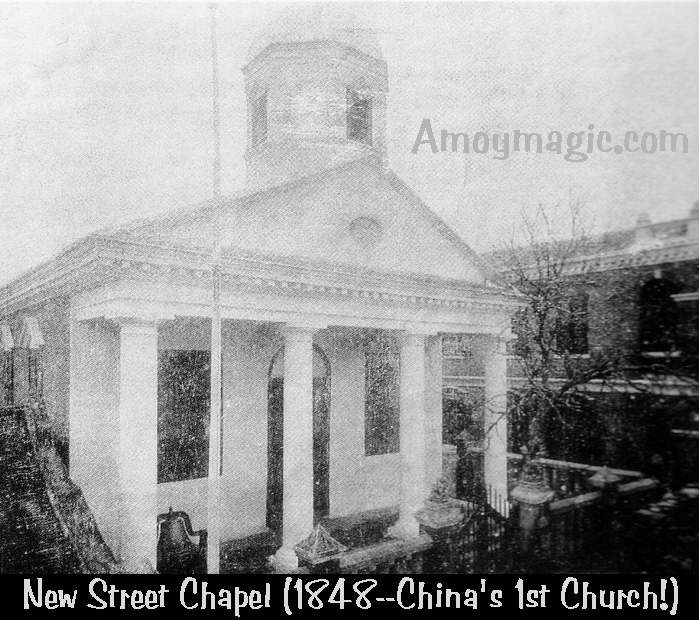
A Christian visiting Xiamen asked, "What denominations do you have in China?"
I answered, "The same as in America--ones, fives, twenties, fifties--though I prefer hundreds."
Many foreign Christians are shocked to learn that we basically have only three discernible Christian denominations in China: Catholic, Protestant, and Seventh-Day Adventist--who for obvious reasons worship on Saturday instead of Sunday, and never lose an opportunity to remind me that the rest of Christendom has has it wrong for the past couple thousand years (which amuses me, especially in China, because in the Chinese language, Sunday is Xingqi Qi --the 7th Day).
A hundred years ago, of course, we did have denominations--the ones the missionaries brought with them. But long before Communism did away wit
China's 1st Protestant Church was built in Xiamen (the corner of Zhongshan and Siming roads) and the Amoy Mission was the strongest and most effective mission in China in part because the missionaries of the main three denominations insisted on cooperating with each other. The home offices of course resisted this fiercely, agreeing to it only when the missionaries in Xiamen threatened to pack up and go home unless they agreed. So in Xiamen, unlike anywhere else in China, missionaries worked together--and just as importantly, they insisted upon developing not a Western church but a Chinese church--the "Church of Christ in China"--with indigenous leadership, music, and forms (such as squares of noodles for communion, since they didn't have bread).
Today we have at least 45 registered churches in Xiamen (and almost 200 in neighboring Quanzhou, which was part of the Amoy Mission). And they work together. When a new church needs to be built, they send around a pink announcement to other fellowships, and Xiamen churches take up collections to help built it. It is refreshing to see them work together.
I just finished rereading "Here I Stand," my favorite b
 iography of Martin Luther, by Roland Bainton (1950). While Luther brought about much need reform, even he was aghast at the divisions and disunity--one faction against another, churches splintering and fighting (to the death at times!). But there was no going back in Luther's Day, and there certainly is no going back today (and, personally, I appreciate the diversity, at least to some extent). So China's lack, so far, of denominationalism is refreshing.
iography of Martin Luther, by Roland Bainton (1950). While Luther brought about much need reform, even he was aghast at the divisions and disunity--one faction against another, churches splintering and fighting (to the death at times!). But there was no going back in Luther's Day, and there certainly is no going back today (and, personally, I appreciate the diversity, at least to some extent). So China's lack, so far, of denominationalism is refreshing.Jesus prayed, "Father, let them be one as we are one." 150 years ago the Amoy Mission set a unique and lasting example. We can still learn from it.
Xiamen--Birthplace of Chinese Protestantism





No comments:
Post a Comment
Please leave a comment!